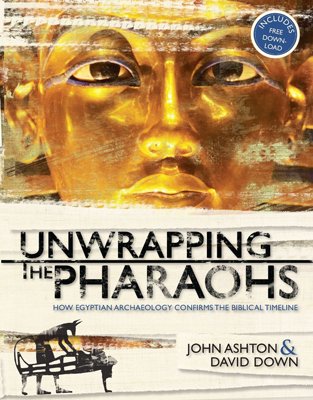
Chapter 24
Rameses the Great
Rameses II succeeded his father, and if he wasn’t the greatest of the pharaohs, he certainly thought he was, and having fathered over 50 sons and probably a similar number of daughters, we would have to concede to his claim for greatness.
At least he was one of the longest ruling pharaohs, 67 years, and was Egypt’s most prodigious builder of temples and statues. Those which he did not build, he hacked the builders’ names off of and inserted his own.
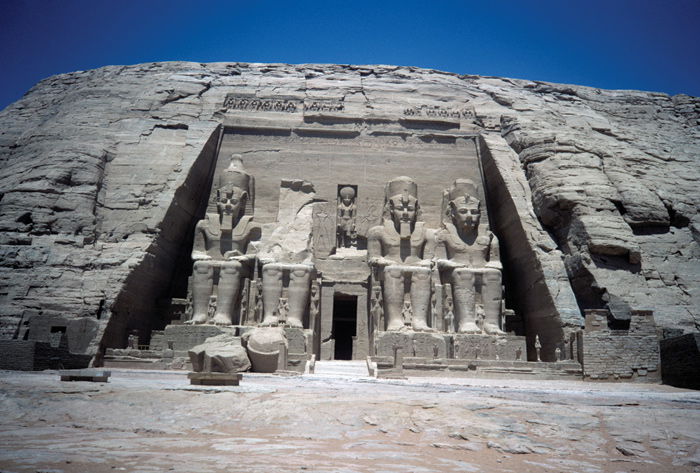
The temple of Rameses II at Abu Simbel, on the southern border of Egypt, was cut out of the solid rock. When it was threatened with the rising waters of the Aswan Dam it was cut into pieces and reassembled on higher ground.
He not only had many statues made of himself, he was addicted to size. His best-known statue was originally erected in Memphis. It was 39 feet (12 m) high and weighed about 80 tons. It now stands in Rameses Square opposite the main Cairo railway station, but modern technology was not up to ancient transport skills. It had to be cut into three pieces to enable it to be transported to its present site. A similar statue is lying on its back in a building among the present ruins of Memphis. A huge statue once stood in the Ramesseum. It was 57 feet (17.5 m) in height and now lies in pieces. No one is sure who broke it or why, but even breaking it must have been a big undertaking.
In 1996, a statue of Rameses II was found in rather an unexpected place—just to the northeast of the pyramid of Menkaure at Giza. A team working under Dr. Zahi Hawass was cleaning up the debris that had accumulated around the pyramid when they unearthed a 13-foot (4 m) high granite statue of Rameses. It was broken in half at the waist and must have been buried there a long time, as it was found beneath a huge amount of debris. But the mystery is, what was a statue of Rameses doing at the pyramids of Giza, which had been built long before Rameses came on the scene and would have been deserted at the time of Rameses?
Rameses’ warrior father introduced him to the military at an early age. Kenneth Kitchen, in his book Pharaoh Triumphant, claims that at the age of ten he was appointed commander in chief of the army, and he was involved in his first battle when he was only 15 years old.1 Therefore, it is not surprising that early in his reign he set out to do battle with the Hittites in Syria.
The Hittites had been extending their control ever farther southward into Syria, and this posed a threat to Egyptian interests. A confrontation was inevitable, so in his fifth year of sole reign, Rameses marshaled his army and marched north. The clash took place at Kadesh, and Rameses never tired of boasting about how he crushed his mighty foes. On temple walls and papyrus manuscript he recorded his triumphs over “the wretched Khatti.” Judging by his words, he did not suffer from an inferiority complex.
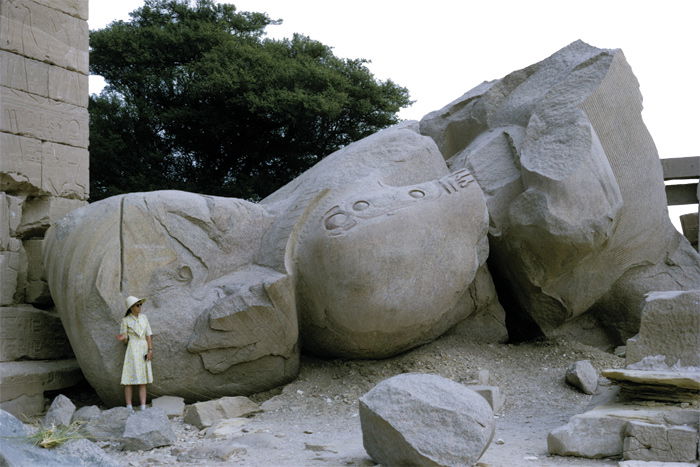
At the Ramesseum, the mortuary temple of Rameses II, this huge statue lies in pieces. It must have been the largest statue ever made of Rameses and would have been 57 feet (17.5 m) in height. Who broke it and why is still disputed.
A champion without his peer, with strong arms and stout heart—beautiful of form like Atum—victorious in all lands. None can take up arms against him; he is a wall for his soldiers and their shield in the day of battle. A bowman whom none equalleth, stronger than hundreds of thousands together; who goeth forward—with [stout] heart in the hour of the encounter—a thousand men cannot stand before him, and an hundred thousand are faint when they see him. Who rescueth his army, [protecteth?] his bodyguard and delivereth his troops—his heart is like a mountain of ore—he, king Rameses.2
It leaves the reader wondering why he bothered taking his army with him.
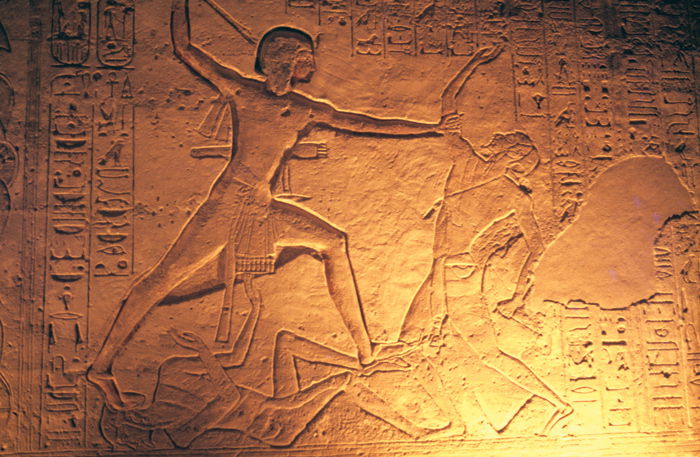
A relief inside Abu Simbel shows Rameses smiting his Hittite foes. He would have us believe he gained a decisive victory, but the two sides finished up signing a non-aggression pact.
The text goes on to say how he vanquished the Hittites, and when they only had Rameses’ version of events, scholars assumed that the Khatti were an insignificant tribe that he had wiped out, but when the Khatti were identified as the Hittites, and the Hittite version was found, scholars had to revise their views. It became known that the Hittites had built up a virtual empire and posed a serious challenge to the might of the Egyptians, and when they took a second look at Rameses’ boasting they could read between the lines and conclude that if anyone had been victorious it had been the Hittites and that Rameses had been lucky to escape without being taken as a prisoner of war.
His majesty [rode] at a gallop and charged the hostile army of Khatti, being all alone and none with him. When his majesty looked behind him he marked that two thousand five hundred chariots encircled him on his way out. . . . No chief is with me, no charioteer, no officer of foot-soldiery nor of chariotry. My foot soldiery and my chariotry left me for a prey before them, and not one of them stood fast in order to fight with them.3
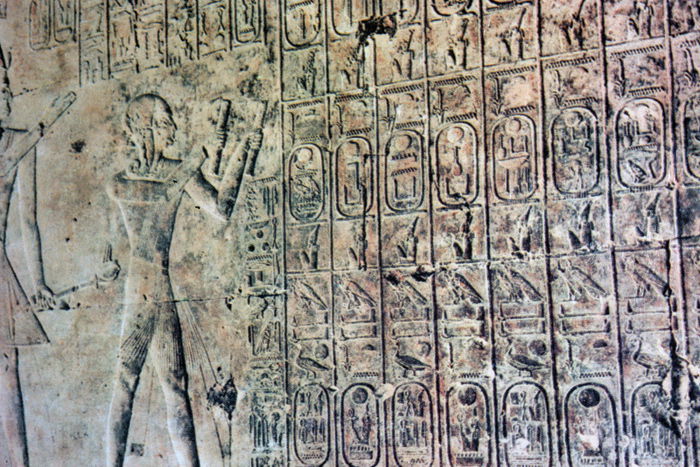
Rameses II as a youth with a sidelock of hair is portrayed beside a king-list of his father Sethi I at Abydos.
Rameses would have liked everyone to think that it was his skill and courage that got him out of this tight spot. “I slaughtered them, slaying them where they stood.”4 It is more likely that Egyptian reinforcements arrived at this critical moment and rescued their king.
Anyway, Rameses wisely concluded that politics was less dangerous than war, and in his 34th year entered into a peace treaty with the Hittite king Hattusilis III and sealed the treaty with a marriage to his daughter, to whom he gave the Egyptian name of Maatnefrure, and she became “the king’s great wife.” It was the marriage of the centuries and is recorded on the walls of his temples. It read:

Rameses built this pylon at the entrance to the temple of Luxor. Originally there were two obelisks. The other one has gone to Paris.
His Majesty was overjoyed. The Lord of the palace was glad when he heard of this extraordinary event whose like was not known before in Egypt. He sent an army and nobles to meet them at once. The daughter of the Great Prince of Hatti, She who had come to Egypt, was led before His Majesty, And after her were brought the many, the countless gifts. Then His Majesty saw that her face was fair as a goddess, And it was a great and rare happening, A magnificent marvel, like nothing heretofore known, Like nothing any man has heard spoken from the mouths of others, Like nothing that is set forth in the writings of our forefathers.5
Safely back home, Rameses addressed himself to immortalizing his name and making preparations for his afterlife. He built magnificent temples at Memphis, Abydos, Luxor, and Abu Simbel, and a mortuary temple to care for his life to come. He completed the hypostyle hall with its 134 huge columns which his father had started at Karnak.
Rameses was big on obelisks and had literally dozens of them hewn out of the granite quarries of Aswan and floated down the Nile to flank the entrances to his temples. Many of these obelisks have since gone overseas. Two once adorned the temple of Luxor, but there is only one standing there today. The other has gone to Paris where it stands in the Place de la Concorde. It is 74 feet (22.5 m) in height and weighs about 227 tons. Another is prominently standing in front of the Pantheon in Rome. Rameses would be proud of his fame in foreign countries, except that few people who see these obelisks stop to think who made them.

On the wall of the temple of Karnak, Rameses is seen worshiping the god Amun. Rameses sealed his treaty with the Hittites by marrying a Hittite princess. The record of this marriage of the century is inscribed on the wall of his temple at Abu Simbel.
Rameses’ favorite wife was Nefertari. She is often depicted on a small scale standing beside her husband’s knees as in the temple of Luxor, but at Abu Simbel she was accorded near-equal status by having a special temple devoted to her, and her tomb in the Valley of the Queens is one of the most exquisite in the land of Egypt. In recent years, its wall paintings were threatened by water seepage causing the paintings on the walls to blister. It took many years of preservation to restore the tomb, which is now open again to a limited number of tourists each day.
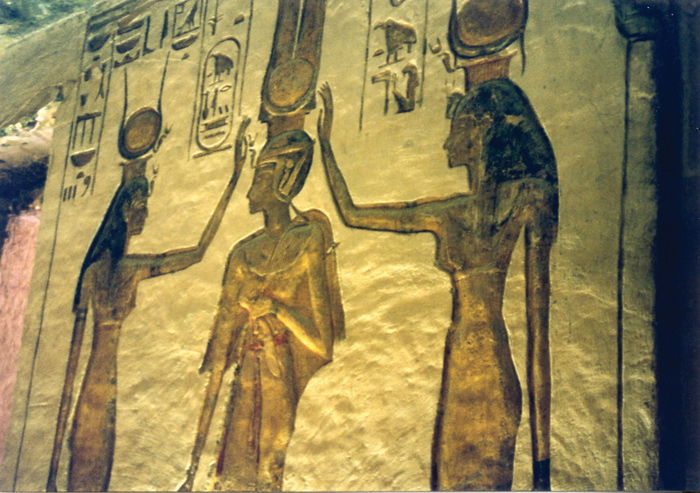
The smaller temple at Abu Simbel features his favorite wife Nefertari worshiping two female deities.
Rameses made full preparation for his afterlife, cutting not only his own tomb in the Valley of the Kings, but on the opposite side of the road a multiple tomb for his many sons. This tomb had been known since Richard Burton first found it, but it only appeared to be a simple underground vault. In the late 1970s, Kent Weeks, professor of Egyptology at the American University in Chicago, started to map the archaeological features of Luxor, particularly those on the west bank. In the course of this project he not only tramped, measuring tape in hand, over miles of old ruins, he also flew over the area in a hot air balloon and used aerial photography and satellite imagery in his endeavor to record the precise location of every temple, tomb, statue, and palace.
In due course, Professor Weeks turned his attention toward the Valley of the Kings. About this time, authorities decided to move the visitors center 1,640 feet, half a kilometer down the valley to try to limit the air pollution caused by huge buses bringing tourists to the site. Close to the demolished center was tomb number KV5, whose entrance near the center had been lost. Its approximate location was known, so Weeks decided to investigate.
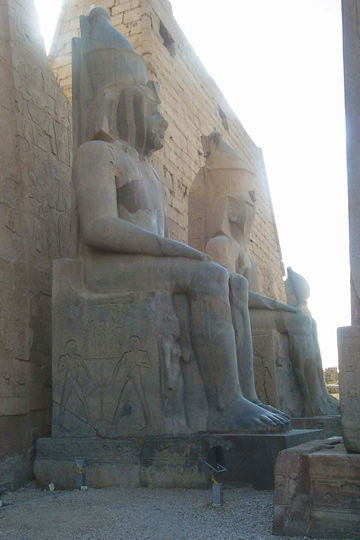
In front of the pylon at the temple of Luxor are huge statues of Rameses. His queen, Nefertari, is shown as less than knee high.
He was able to apply hi-tech devices such as a magnetometer to aid in the search, but in the end he had to resort to old-fashioned digging to find the deeply buried tomb. Using the technique that was employed by Theodore Davis in the 1920s, Weeks had his workmen dig a series of holes down to bedrock, each hole half a doorway apart from the last, in the hope that one of them would strike part of the entrance.
In late 1987, the toil paid off and the elusive entrance to Tomb 5 was rediscovered. Unfortunately, it was even more full of debris than when last visited, and Weeks had to wriggle in through a gap that was as low as 16 inches (40 cm) between floor and ceiling. A journalist who visited the tomb described getting through the entrance as like “wriggling under a bed.”
The pillared hall and ancillary rooms described by Burton were all still there, and Weeks was delighted to discover that, further into the tomb, the floor was littered with archaeological treasure—beads, broken pottery, the remains of shattered canopic jars, and even fragments of mummies, including what was quite clearly a knee joint.
Electric light enabled Weeks to explore the tomb more thoroughly than Burton ever did, though Burton actually wrote his name on the ceiling, using smoke from the candle he was holding. In the first chamber of the tomb, Weeks discovered some hieroglyphs that spelled out the name of Rameses II’s first and second sons. In the second chamber, a broken alabaster canopic jar bore the name of Rameses II’s seventh son. Weeks already knew that 70 years earlier his predecessors had found a pottery fragment just outside the tomb on which was written the name of Rameses II’s 15th son.
Weeks began to sift through the debris, and he came at last to the mystery corridor depicted on Burton’s plan. The doorway into it was blocked by flood debris, but when this was cleared Weeks was delighted to be able to stand up and shine his light down the unknown passageway.

Inside the temple of Rameses at Abu Simbel, huge statues have been carved out of the rock. At the far end Rameses is depicted with three deities. These were illuminated only twice a year when a shaft of light from the rising sun penetrated the passage for a few minutes.
To his astonishment, his powerful electric light revealed eight doorways on either side of the corridor and, at the end, a huge, faceless relief of Osiris, the god of the underworld. Weeks sent for more cable and then walked down the corridor. He was astounded to discover that at the Osiris relief there was a “T” junction with 16 more doorways to left and right, a total of 48 doors. These were the mortuary chapels for each of Rameses’ sons, and the burial chambers were in the story below them.
A question that needs to be answered is, when did all this happen? Rameses is usually assigned a date about 1304-1237 B.C., and 19th-century scholars were eager to identify him as the pharaoh of the Exodus. The biblical date for the Exodus is about 1445 B.C., but Rameses was near enough to that date. After all, Exodus 1:11 stated that “they set taskmasters over them to afflict them with their burdens. And they built for Pharaoh supply cities, Pithom and Raamses.”
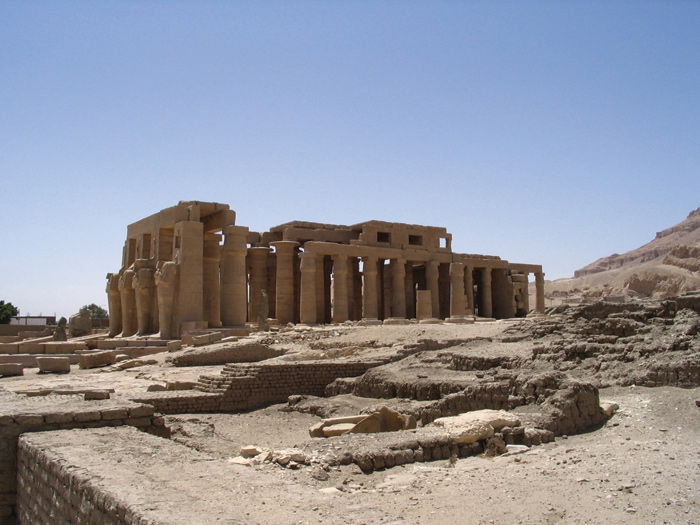
The Ramesseum, the mortuary temple of Rameses II on the west bank of the Nile at Luxor. On the right are long mud brick storehouses which may have originated when Joseph was storing grain in preparation for the seven-year famine. There are similar store rooms at Abydos.
The Bible did not say that Rameses built these cities, but that was a minor matter. Subsequent excavations have failed to find any evidence for Semitic slaves in Egypt in the 14th century B.C., so most scholars today dismiss the Exodus story, or if there was an exodus, they still cling to the idea that Rameses was the pharaoh of the oppression, or of the Exodus itself.
David Rohl, in his book A Test of Time, claimed, “This book will demonstrate that all is not well with the conventional chronology, and that the only real solution to the archaeological problems which have been created is to pull down the whole structure and start again, reconstructing from the foundations upwards.”6

The hypostyle hall in the temple of Karnak has 134 massive columns. Sethi I started erecting these columns, but Rameses completed the job.
Rohl goes on to say,
“The new chronology has determined that Rameses II should be dated to the tenth century B.C.—some three hundred and fifty years later than the date which had been assigned to him in the orthodox chronology.”7
This would bring Rameses down to the last half of the tenth century, the time of Solomon’s son Rehoboam. This then would identify Rameses as the pharaoh Shishak who looted Jerusalem (1 Kings 14:25). But this leaves some questions unanswered, and Rohl admits that “further research is needed before the 20th Dynasty can be added to the New Chronology model.”8 A further reduction is needed, and a clue to this is to be found in the dating of Rameses’ son Merneptah.
Rameses lived too long for Egypt’s good. There are no inscriptions from the reign of Rameses after his 40th year on the throne, and it is apparent that affairs of state were being neglected. Libyans from the west were invading the land. One by one, Rameses’ older sons died off, and by the time Rameses fulfilled his days and went to his final rest, 12 of his sons had preceded him to the tomb. It was left to his 13th son, Merneptah, to mount the throne as pharaoh.
Unwrapping the Pharaohs
Adults and children alike are fascinated by Egyptian civilization. But most modern archaeologists have lately tried to use Egyptian chronology to dispute the biblical record. Secular textbooks and videos challenge the faith of students and discredit the biblical account of Exodus. Those who wish to defend the accuracy of the Bible now have an incredible tool in this exciting book that provides compelling confirmation of the biblical account.
Read Online Buy BookFootnotes
- Kitchen, Pharoah Triumphant: The Life and Times of Ramesses II, p. 224.
- Lichtheim, Ancient Egyptian Literature, Vol. 1, p. 260.
- Ibid., p. 263.
- Ibid., p. 265.
- C.W. Ceram, Narrow Pass Black Mountain: The Discovery of the Hittite Empire (London: Victor Gollancz Ltd. and Sidgewick and Jackson Ltd., 1956), p. 190.
- Rohl, A Test of Time: The Bible—from Myth to History, p. 9.
- Ibid., p. 143.
- Ibid., p. 144.
Recommended Resources

Answers in Genesis is an apologetics ministry, dedicated to helping Christians defend their faith and proclaim the good news of Jesus Christ.
- Customer Service 800.778.3390
- Available Monday–Friday | 9 AM–5 PM ET
- © 2025 Answers in Genesis

